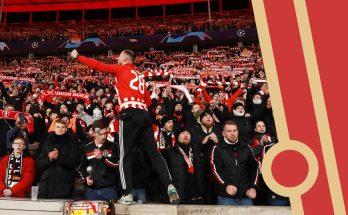The excitement surrounding Shohei Ohtani’s pitching debut with the Los Angeles Dodgers was palpable. Fans, analysts, and teammates alike had been eagerly anticipating the moment when the two-way superstar would take the mound wearing the Dodgers uniform. Ohtani, renowned for his rare combination of elite pitching and hitting, had dazzled in the American League with the Angels, but many wondered how his pitching skills would translate to a new team, a new league, and a new set of expectations. Unfortunately, what unfolded during his first start for the Dodgers was not quite what everyone hoped for, and it soon became a topic of intense scrutiny.
Dave Roberts, the Dodgers’ manager, known for his calm and steady leadership, found himself under fire following Ohtani’s debut. Roberts did not shy away from addressing the shortcomings he observed during the game, openly criticizing some of Ohtani’s mistakes on the mound. His candid remarks surprised many, especially given Ohtani’s status and previous track record. Roberts’ criticism was not meant to disparage the player but rather to acknowledge the reality of the performance and to lay out a clear path forward for improvement.
The Dodgers’ decision to bring in Shohei Ohtani as a pitcher was a bold move that carried enormous expectations. Ohtani’s pitching repertoire—highlighted by a blistering fastball, a devastating splitter, and a sharp slider—had made him a formidable opponent in the American League. However, the National League, with its different style of play, including more strategic use of pitchers and a higher emphasis on situational hitting, posed unique challenges. The adjustment period for Ohtani was anticipated, but the details of his struggles in that debut were eye-opening.
During his first start, Ohtani struggled with command and control. His fastball, usually a weapon to overpower hitters, missed the strike zone on multiple occasions, resulting in walks and forcing his defense into difficult situations. The timing and placement of his breaking balls were inconsistent, leaving hitters able to predict and capitalize on pitches that would normally have them off-balance. The Dodgers’ defense had to work hard to bail him out several times, but the mounting pressure took its toll, and Ohtani was unable to complete the expected number of innings effectively.
Roberts pointed out that the mistakes made by Ohtani were not necessarily a reflection of his talent but rather the growing pains of adapting to a new environment and a different style of play. Roberts emphasized that pitching is as much about strategy and mental toughness as it is about raw skill. He noted that Ohtani’s pitch selection at critical moments was sometimes off, and that the veteran hitters in the National League took advantage of any lapses in concentration or predictability.
In his post-game analysis, Roberts was both frank and hopeful. He acknowledged that Ohtani’s debut was “not what we expected, not what Shohei expected,” but also reminded fans and media that adaptation takes time. Roberts highlighted that the coaching staff was committed to working closely with Ohtani to refine his approach, improve his pitch sequencing, and build his confidence on the mound. He expressed belief that Ohtani’s competitive spirit and work ethic would allow him to overcome these early challenges.
One of the critical next steps Roberts outlined was a renewed focus on Ohtani’s preparation and game planning. The Dodgers have a highly analytical and data-driven approach to pitching, and the coaching staff intended to leverage all available resources to help Ohtani identify hitters’ tendencies, exploit weaknesses, and make smarter pitch choices. This included more detailed scouting reports, video analysis, and one-on-one sessions with the pitching coach to adjust mechanics and mental approach.
Roberts also mentioned the importance of managing Ohtani’s workload carefully. Given his unique role as a two-way player who contributes as both a hitter and a pitcher, balancing rest and recovery was paramount. The team planned to monitor Ohtani closely to avoid fatigue, which could exacerbate control issues and reduce effectiveness. They intended to tailor his bullpen sessions, bullpen catchers, and simulated innings to optimize his conditioning and reduce injury risk.
Another aspect Roberts discussed was the importance of building chemistry between Ohtani and his catcher, the battery partner who plays a crucial role in calling the game. Communication and trust between pitcher and catcher can dramatically influence a pitcher’s confidence and execution. Roberts emphasized that they would work to ensure that Ohtani and the Dodgers’ primary catchers were in sync on pitch calls, signs, and strategies against opposing hitters.
The Dodgers’ clubhouse remained supportive throughout this period. Veteran players, many of whom had witnessed similar adjustments in their own careers, expressed confidence in Ohtani’s ability to rebound. Their support helped maintain a positive environment that fostered growth rather than criticism. Roberts stressed that baseball is a team sport and that the entire Dodgers organization was behind Ohtani, committed to helping him reach his full potential.
Media coverage of Roberts’ comments was mixed. Some applauded his honesty and willingness to confront the challenges head-on, seeing it as a refreshing departure from the usual diplomatic responses. Others questioned whether publicly airing Ohtani’s struggles might undermine the player’s confidence or send mixed messages to the fanbase. Regardless, the conversation sparked by Roberts brought much-needed attention to the complexities involved in integrating a superstar two-way player into a new team.
From a broader perspective, Ohtani’s debut and Roberts’ candid assessment underscored how difficult it is for any player to transition to a new league and team, even for someone as talented as Ohtani. The adjustment period is rarely seamless, and managing expectations is a delicate balancing act between patience and accountability. The Dodgers, aware of these nuances, appeared committed to a long-term approach, emphasizing development and incremental improvement rather than immediate perfection.
Ohtani himself showed resilience in interviews following the game. He acknowledged the mistakes and expressed determination to learn from the experience. He spoke about the differences in hitting approaches between leagues and the challenge of adapting his pitching strategy accordingly. Ohtani’s humility and willingness to embrace the learning curve reinforced Roberts’ confidence in his eventual success.
The next few outings for Ohtani would be critical. The coaching staff aimed to implement a more tailored game plan for each start, including adjusting pitch sequences based on opponent scouting and refining mechanics to enhance control. Physical conditioning remained a priority, and the team worked on strengthening Ohtani’s endurance to withstand the rigors of pitching while maintaining his hitting duties.
As the Dodgers progressed through the season, fans and analysts closely watched Ohtani’s development. Early struggles gave way to incremental improvements as he gained familiarity with opposing hitters and refined his approach. Pitch velocity stabilized, control improved, and Ohtani began demonstrating flashes of the dominance that made him a star. Roberts’ initial criticism evolved into praise for the progress and adaptation he observed.
This phase of Ohtani’s career with the Dodgers illustrated the importance of patience and process in professional sports. It highlighted how even the most gifted athletes need time to adjust to new circumstances and how leadership must balance criticism with support to foster growth. Roberts’ willingness to publicly address the difficulties while outlining a clear path forward helped set realistic expectations and build a framework for success.
In retrospect, Ohtani’s Dodgers pitching debut and the subsequent response by Dave Roberts offered valuable insights into the challenges of integrating a unique talent into a new environment. It showed that success is not guaranteed by past achievements alone but requires continuous effort, adaptation, and support. For fans, it was a reminder that behind every highlight reel moment lies hard work, setbacks, and perseverance.
The Dodgers’ commitment to Ohtani’s development continued beyond the mound. They explored ways to optimize his role as a two-way player, balancing his time between pitching and hitting to maximize impact while minimizing injury risk. This holistic approach recognized Ohtani’s unique value and sought to preserve his health and effectiveness over a demanding season.
Ultimately, the narrative surrounding Ohtani’s pitching debut was not just about one game or one player’s performance; it was about the complexities of modern baseball, the evolving roles of athletes, and the importance of leadership in navigating challenges. Dave Roberts’ candid assessment and strategic plan reflected a broader understanding of how to cultivate talent in today’s game.
As Ohtani continued to grow into his role with the Dodgers, the lessons learned from his debut would serve as a foundation for success. His journey underscored the reality that even superstars face obstacles and that the true measure of greatness lies in how they respond to adversity. Roberts’ guidance and the Dodgers’ comprehensive support system played crucial roles in this process.
In conclusion, Dave Roberts’ criticism of Shohei Ohtani’s Dodgers pitching debut was a moment of honesty and accountability that sparked important conversations about player development and team dynamics. By highlighting mistakes and outlining essential next steps, Roberts set the stage for Ohtani’s continued growth and adaptation. The episode demonstrated the challenges of transitioning to a new team and league and reinforced the value of leadership, patience, and strategic planning in professional sports. Ohtani’s experience with the Dodgers would ultimately become a testament to resilience, hard work, and the relentless pursuit of excellence.


